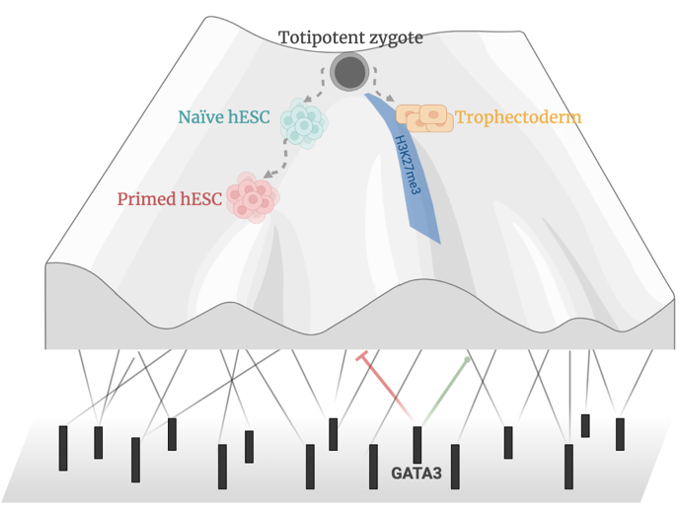The first lineage choice made in human embryo development separates trophectoderm from the inner cell mass, which proceeds to form the pluripotent epiblast and primitive endoderm. Trophectoderm on the other hand gives rise to the placenta. Naïve pluripotent stem cells are derived from the pluripotent epiblast of the blastocyst and offer possibilities to explore how lineage integrity is maintained. Here, we discover that Polycomb repressive complex 2 (PRC2) restricts an intrinsic capacity of naïve pluripotent stem cells to give rise to trophectoderm. Through quantitative epigenome profiling, we find that broad histone H3 lysine 27 trimethylation (H3K27me3) hypermethylation is a common feature of naïve pluripotency across species. We define a previously unappreciated, naïve-specific set of bivalent promoters, featuring PRC2-mediated H3K27me3 concomitant with H3K4me3. Naïve bivalency maintains key trophectoderm transcription factors in a transcriptionally poised state that is resolved to an active state upon depletion of H3K27me3 via inhibition of the enzymatic subunits of PRC2, EZH1/2. Conversely, primed human embryonic stem cells cannot be driven towards trophectoderm development via PRC2 inhibition. While naïve and primed hESCs share the majority of bivalent promoters, PRC2 contributes to the repression of largely non-overlapping subsets of these promoters in each state, hence H3K27me3-mediated repression provides a highly adaptive mechanism to restrict lineage potential during early human development.

Read more in our manuscript with Fredrik Lanner and colleagues on bioRxiv.